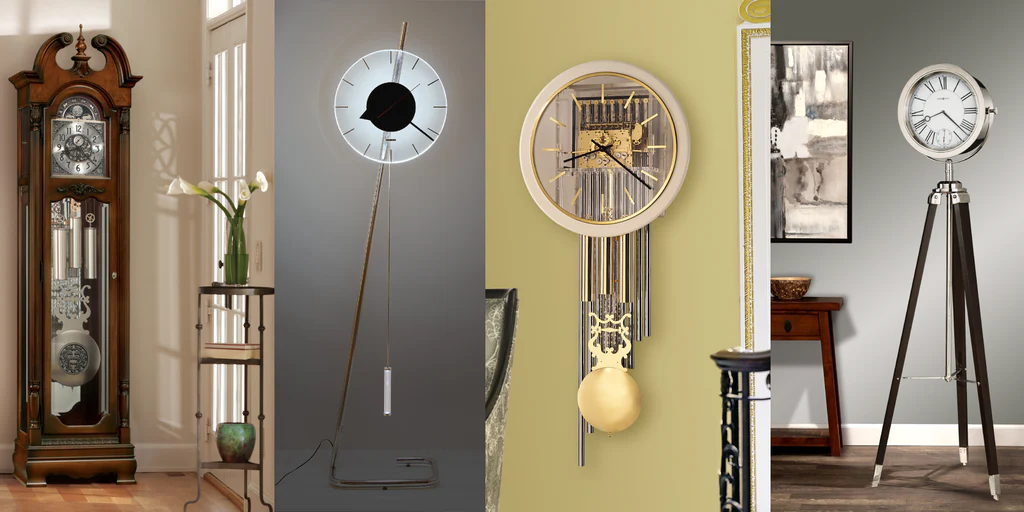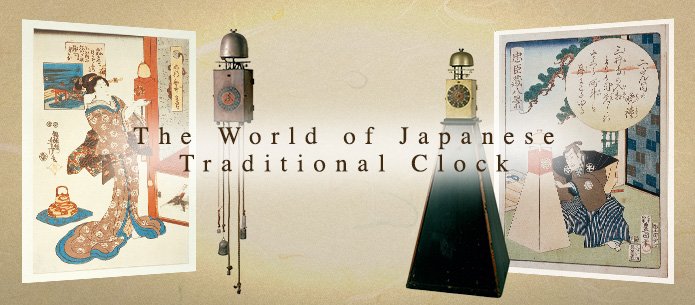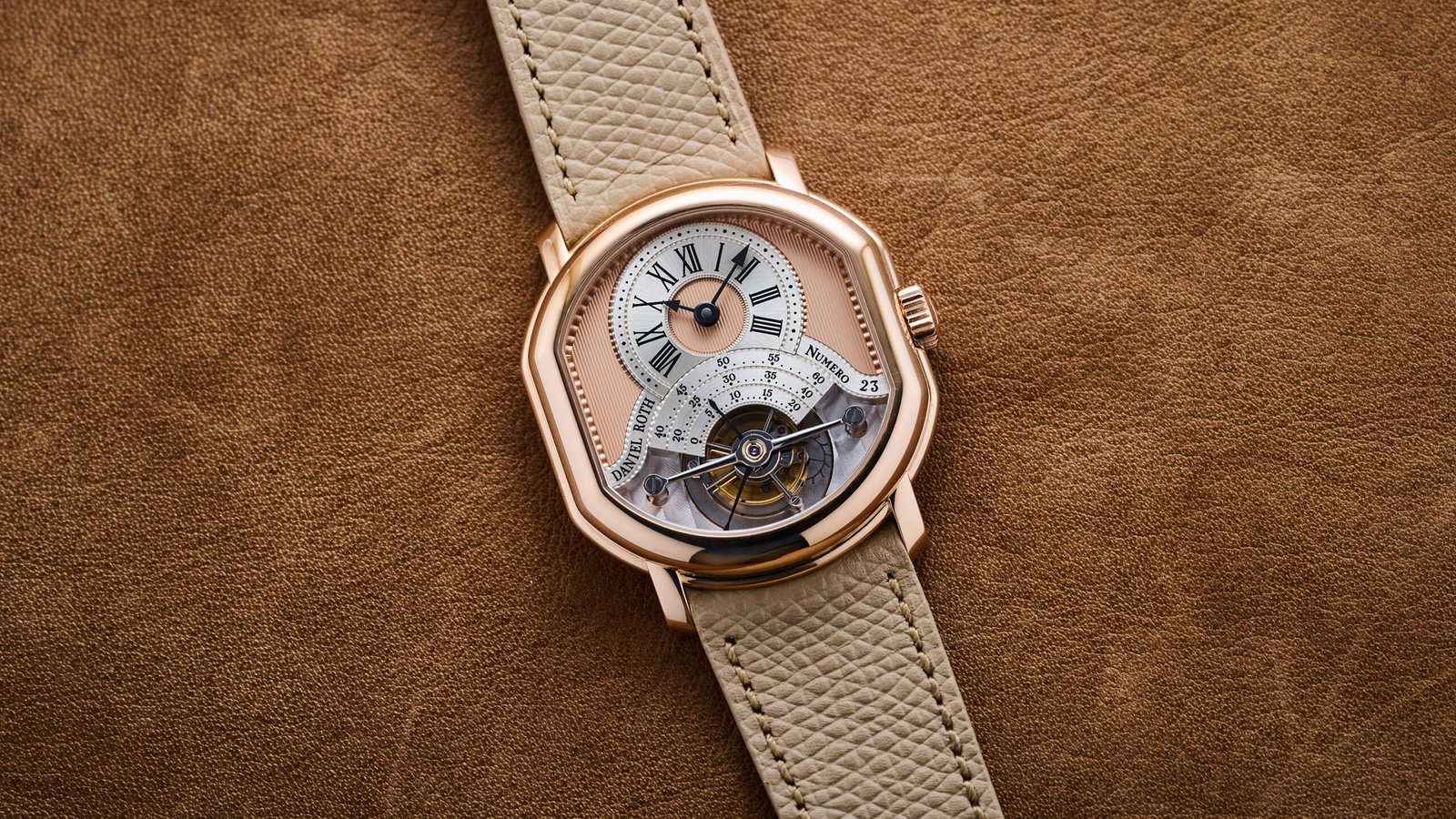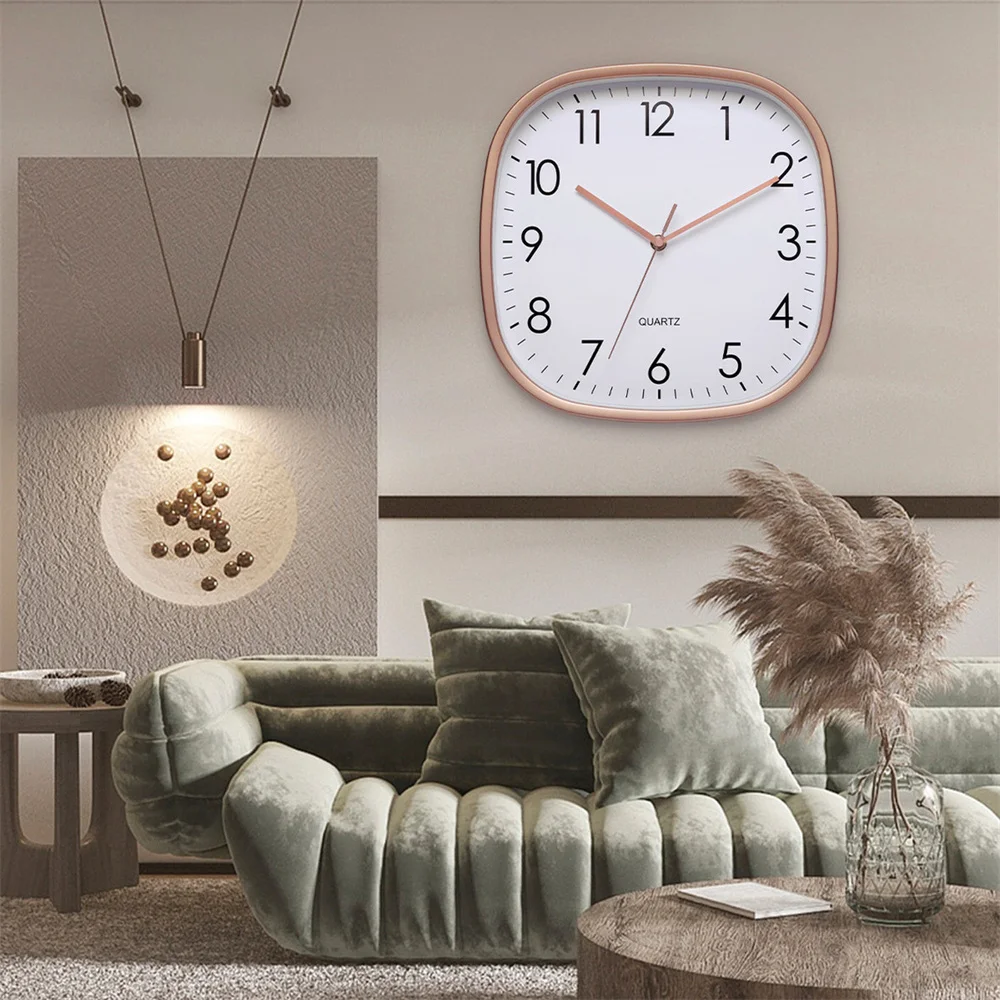When it comes to timekeeping, Japan and the West have developed clocks with distinct characteristics that reflect their respective cultural, technological, and historical influences. From the traditional Japanese Wadokei to the precise mechanisms of Western clocks, each region has a unique approach to measuring time. In this article, we’ll explore the key differences between Japanese and Western clocks, focusing on their design, timekeeping systems, and historical context.
1. Timekeeping Systems: Natural Time vs. Mechanical Precision
One of the most significant differences between Japanese and Western clocks lies in their early timekeeping systems.
- Japanese Wadokei: Japan’s traditional clock, the Wadokei, was designed to follow “temporal time,” which varied based on the position of the sun. The day and night were each divided into six unequal hours, which changed in length with the seasons. This method connected timekeeping to nature, reflecting Japan’s deep respect for natural rhythms.
- Western Clocks: Western clocks, on the other hand, developed to follow a 12-hour system with equal hour lengths throughout the year. This mechanical precision was driven by advances in clockmaking technology in Europe, where the focus was on accurate and consistent time measurement, regardless of natural changes.
2. Design and Aesthetic Appeal
The design and aesthetic elements of Japanese and Western clocks also differ significantly, with each culture incorporating its own artistic values into clockmaking.

- Japanese Clock Design: Japanese clocks, especially in the Edo period, often featured wooden cases, hand-painted details, and intricate carvings. They emphasized the beauty of craftsmanship and the integration of nature into design. Traditional Japanese clocks were often minimalistic, reflecting the principles of wabi-sabi, which values simplicity and imperfection.
- Western Clock Design: In contrast, Western clocks, particularly from the 18th and 19th centuries, tended to be more ornate. Grandfather clocks and mantel clocks often featured elaborate carvings, gilding, and metal components. The design focused on grandeur and precision, with many Western clocks doubling as status symbols.
3. Historical Context and Evolution
The historical development of clocks in Japan and the West also highlights some key differences in their approach to timekeeping.
- Japanese Clocks: Clockmaking in Japan began in earnest during the Edo period (1603-1868) when trade with the West introduced mechanical clocks to the country. However, Japan’s timekeeping system remained rooted in the Wadokei style for centuries, even after the introduction of Western clocks. It wasn’t until the Meiji Restoration in the late 19th century, when Japan modernized rapidly, that Western-style clocks became the standard.
- Western Clocks: The evolution of Western clocks was driven by scientific advances during the Renaissance and Industrial Revolution. Europe and America saw significant innovations in mechanical clockmaking, such as the development of the pendulum clock, which increased accuracy. The West also pioneered the mass production of clocks, making timekeeping devices more accessible to the public.
4. Functionality and Mechanisms
While both Japanese and Western clocks have advanced over time, their early mechanisms differ in complexity and function.
- Japanese Mechanisms: Traditional Japanese clocks like the Wadokei required complex adjustments to change the length of the day and night hours. These clocks often featured movable markers or adjustable weights that allowed the user to modify the timing of each hour based on the season.
- Western Mechanisms: Western clocks, particularly after the invention of the pendulum clock by Christiaan Huygens in 1656, were designed for precision. Western clocks operated on fixed hour lengths, with pendulums and later quartz technology ensuring accurate, consistent timekeeping.
5. Modern-Day Innovations
In the modern era, both Japanese and Western clocks have embraced technology, but their approach to innovation reflects their cultural priorities.
- Japanese Clocks Today: Modern Japanese clockmakers, such as Seiko and Citizen, have developed a reputation for blending tradition with cutting-edge technology. Japan leads in producing quartz clocks, solar-powered clocks, and atomic clocks, emphasizing reliability, sustainability, and minimalism.
- Western Clocks Today: In the West, clockmakers continue to focus on precision and craftsmanship. Swiss brands like Rolex and Patek Philippe, for example, are known for their luxury mechanical watches, which highlight technical mastery and timeless design.
Conclusion
The key differences between Japanese and Western clocks reflect their respective cultural values, historical contexts, and technological developments. From Japan’s nature-based Wadokei to the mechanical precision of Western clocks, both regions have contributed significantly to the world of timekeeping. Whether you prefer the simplicity of Japanese aesthetics or the ornate craftsmanship of Western clocks, each type offers a unique perspective on how we measure and experience time.





April 1856 wurde vom damaligen Fürsten Florestan die erste Lizenz an die Franzosen Napoléon Langlois und Albert Aubert vergeben.
Die Geschichte der Spielbank von Monte-Carlo reicht zurück bis ins Jahr 1854, als man sich in Monaco Gedanken über neue Einnahmequellen machte.
Die Spielbank Monte-Carlo ist eine der bekanntesten Spielbanken der Welt und befindet sich in Monte-Carlo, einem
Stadtbezirk von Monaco.
Für 2020 war eine Modernisierung im Stil der
Casinos von Las Vegas geplant. Neben den klassischen Spielern aus Osteuropa
und Italien kamen mehr Kunden aus dem Nahen Osten und China.
Im Juli 2004 tauchten Berichte auf, wonach die SBM gemeinsam mit dem US-amerikanischen Casinomilliardär Steve Wynn in der Bucht von Monaco ein schwimmendes Mega-Casino bauen werde.
Aber ein Tagesausflug ab Nizza lohnt sich definitiv! Ob Luxus im
Casino und Hôtel de Paris oder charmante Altstadt und Museen – hier gibt’s Kontraste.
Welche sind die beliebtesten Erlebnisse in undefined?
Entdecken Sie die exklusiven Geheimnisse von Monaco, der mediterranen Perle.
Tagesausflug von Nizza nach Monaco und zu den hochgelegenen mittelalterlichen Dörfern Entdecken Sie Monte Carlo und Eze bei dieser halbtägigen Gruppenreise
ab Nizza.
References:
https://online-spielhallen.de/mr-bet-casino-bewertung-umfassender-testbericht/
Ein gutes deutsches Online-Casino sollte einen gesunden Mix aus allen Spielen der verschiedenen Hersteller im
Sortiment haben. Wer das beste Online-Casino in Deutschland sein möchte, arbeitet mit den renommiertesten Spieleentwicklern der Branche zusammen. Deshalb können Echtgeld-Casinos für ihren Live-Casino-Bereich keinen kostenlosen Demo-Modus anbieten.
Dieser kann in Form von Freispielen ohne Einzahlung gutgeschrieben werden. Ihre Freispiele oder
Ihr 100 % Ersteinzahlungsbonus damit verbunden war,
müssen diese zuerst erfüllt werden, bevor Sie eine Auszahlung
durchführen. Wenn Sie Ihre Auszahlung anfordern, müssen beste
deutsche Online Glücksspiel Casinos mit einer gültigen Casino Lizenz bestimmte Bedingungen zur Vermeidung
von Geldwäsche erfüllen. Um bei einer Online Glücksspiel
Spielothek um echtes Geld spielen zu können, muss ein Kundenkonto oder Spielerkonto eröffnet werden. Auch diese Casinos
bieten Spiele von den bereits genannten Top-Spielanbietern. Eine Liste der besten Casinos finden sie auf dieser Webseite.
Es besteht auch eine Informationspflicht der regulierenden Behörden darüber, wo sich
die Konten mit dem Spielergeld befinden. Während der Übergangsphase
zur deutschen Lizenzierung erlebten viele Online Casinos Herausforderungen im Bereich des Kundensupports.
In der folgenden Grafik siehst du den Vergleich der Umsatzbedingungen für Boni in deutschen Online-Casinos.
Beinahe alle Casinos bieten einen Willkommensbonus an, da sie damit neue Spieler gewinnen möchten. Du siehst also, viele Casinos bieten dir nicht nur Bonusgeld an,
sondern schenken dir auch noch Freispiele – also Gratis-Runden an Spielautomaten. Online Casinos vergeben ebenso Bonusguthaben, was dir zeitweise auch die Möglichkeit eröffnet, ohne Einzahlung
zu spielen.
References:
https://online-spielhallen.de/joo-casino-test-erfahrungen-2-550-spiele/
You can view your current loyalty points in your account overview, located
in the top right-hand corner. Once this wagering has been completed, your bonus and winnings from the bonus will be converted into real money that can be cashed out.
Keep in mind that $3 is the maximum bet allowed while using bonus funds.
The free spins can be played on Witch Treasures by GameBeat.
You can get 50 free spins every Monday, as long as you make a deposit of $30 or more.
Welcome to your new gaming adventure – claim a generous welcome bonus with free spins and enjoy smooth play
on desktop, tablet, or mobile. Skycrown provides its users a
variety of bonuses and incentives designed to boost their odds of winning and elevate their entire gaming experience.
Boost your gaming experience with generous multi-deposit bonus structures.
Crash games hook players with a basic yet addictive concept –
bet money, watch a multiplier rise, and cash out before it crashes to zero.
In Australia, the mobile experience hits the sweet spot for players who want flexibility.
It installs in seconds and gives you full access to pokies, live tables,
banking, and bonuses. If you’re into real action with
real people, the live section at skycrown online casino delivers big.
Our team is fully committed to creating a seamless and enjoyable experience for every
player, and it is truly rewarding to know that our efforts resonate with you.Should you require any assistance or have additional feedback, please do not hesitate to contact us at These measures are
in place to protect both the player and the casino.We regret
any frustration caused by the situation and encourage you to contact us directly at
References:
https://blackcoin.co/roulette-tutorial/
Home to Darwin’s only five-star beachfront resort, it features a
private white-sand beach, and upgraded facilities that redefine comfort
and style with a level of service other hospitality venues can only
dream about. ChatGPT has experienced significant growth recently due
to the launch of new models and features, such as GPT-4o, with multimodal capabilities.
The company’s CEO Sam Altman said on Wednesday, however,
that the release of the image generation feature to free users would be delayed
due to higher demand than the company expected.
The private equity company that owns CNET, Red Ventures, was accused of using ChatGPT for SEO farming, even if the information was incorrect.
The web form for making a deletion of data about you request
is entitled “OpenAI Personal Data Removal Request”.
There are multiple AI-powered chatbot competitors such as
Together, Google’s Gemini and Anthropic’s Claude, and developers are creating open source alternatives.
References:
https://blackcoin.co/optimal-bluffing-strategy-in-poker/
With the redesigned private gaming rooms Sovereign and Oasis, the land based casino delivers the finest in premium gaming experiences.
Mississippi stud poker, three card poker, Caribbean stud poker, and Texas Hold ’em
bonus poker are among the poker games available on the casino floor.
Only two poker tables are available in the poker room,
with the majority of the games being Texas Hold ’em ($2/$3).
After you’ve finished spinning the reels, walk over to the
table games area to try your hand at your favorite table casino
games. More information on premium membership access and advantages will be sent to eligible members.
View current jackpot sums for games like Golden Dollars Grand, Dinomite, Highway Zone, Players Paradise Gold, and more.
The hosts will gladly answer any questions you may have about membership requirements and advantages.
There is no limit, and there is a buy-in ranging
from $100 to $300 for Texas Hold ’em. On both the Main Gaming Floor and the Private Gaming
Room, there are over 1,400 pokies and video poker
machines, making it a pokies lover’s delight. Below we take
you through what you can expect from the casino in detail.
Many attractions are within walking distance of
the casino, located on the picturesque Gold Coast.
References:
https://blackcoin.co/59_online-casino-vip-programs_rewrite_1/
In 2016, YouTube introduced an option to watch every video on the platform in 360-degree mode with Snoop Dogg.
The next year, YouTube added a music button to the
video bar that played samples from “Sandstorm” by Darude.
A video of two presenters announcing the nominated videos
streamed live for 12 hours.
Concurrently, old media celebrities moved into
the website at the invitation of a YouTube management that witnessed early
content creators accruing substantial followings and perceived audience sizes potentially larger than that attainable
by television. As of 2018, public access to YouTube was blocked by countries including China, North Korea, Iran, Turkmenistan, Uzbekistan, Tajikistan, Eritrea, Sudan and South Sudan. In December 2024,
YouTube added the functionality of automatic language dubbing, which
uses AI to produce translations of videos into different languages.
On February 28, 2017, in a press announcement held at
YouTube Space Los Angeles, YouTube announced YouTube TV, an over-the-top MVPD-style subscription service that
would be available for United States customers at a
price of US$65 per month.
References:
https://blackcoin.co/casino-crypto-first-online-casino-review/
online casino for us players paypal
References:
corerecruitingroup.com
online betting with paypal winnersbet
References:
play123.co.kr
usa casino online paypal
References:
https://shilngie.com/profile/esthercoverdal
online casino paypal
References:
https://timviec24h.com.vn/companies/online-roulette-australia-top-sites-game-types-winning/
online slot machines paypal
References:
https://carrefourtalents.com/employeur/best-online-casinos-australia-2025-find-top-aussie-casino/
online casino uk paypal
References:
https://starlikekorea.com/bbs/board.php?bo_table=free&wr_id=752
app xn88 tự hào là thương hiệu giải trí trực tuyến hàng đầu, vận hành dưới sự giám sát nghiêm ngặt của tổ chức PAGCOR. Chúng tôi cam kết duy trì một môi trường cá cược minh bạch và thượng tôn pháp luật. TONY12-30